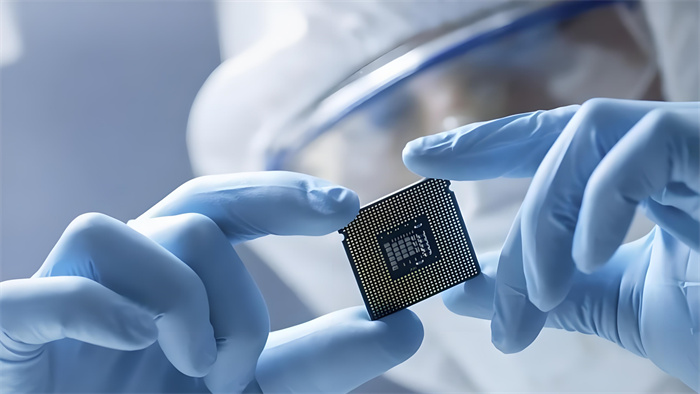
On March 4, a Reuters report ignited market sentiment. The report stated that China plans to issue guidance for the first time, encouraging the nationwide use of open-source RISC-V chips, with the policy potentially being released as early as March.The news has not been officially confirmed. However, following the announcement, the semiconductor sector collectively surged, with over 20 stocks in the sector hitting their daily limit or rising more than 10%.In the field of chip design, the instruction set is the lowest level of technical standard, and different instruction set standards create different chip ecosystems. In recent years, as X86 and ARM have been dominated by Europe and the United States, RISC-V, as an emerging open instruction set standard, has gained increasing attention from Chinese companies.Several industry insiders interviewed by the China Business Journal stated that RISC-V could develop into a third major instruction set alongside X86 and ARM. More importantly, RISC-V is essentially an open standard that will shape a new world of open-source chips. The popularity of DeepSeek may promote the application of RISC-V, as DeepSeek’s model can run efficiently on less powerful chips.

RISC-V’s RisePublic information shows that RISC-V is an open instruction set architecture based on the principles of reduced instruction set computing, first released by a research team at the University of California, Berkeley in 2010.RISC-V technology allows any individual or organization to freely use, modify, and extend it without paying patent fees, making it an attractive option, especially in the context of increasing technological competition between China and the United States. Many believe it is a crucial cornerstone for a self-controlled CPU and will stand alongside X86 and ARM in the future.Due to its efficiency, cost-free nature, and openness, RISC-V has seen strong growth over the past 15 years. The emergence of RISC-V has opened up more possibilities for chip giants. NVIDIA has launched a RISC-V strategy, claiming to ship 1 billion RISC-V cores in 2024 alone. As the ecosystem continues to grow, domestic giants are also laying out plans and launching products, including Huawei’s Kunpeng processors and Alibaba’s Pingtouge Xuantie series chips.China has made significant investments in RISC-V, achieving notable results. The RISC-V architecture first entered China in 2017, and the following year saw the establishment of the China RISC-V Industry Alliance and the China Open Instruction Ecosystem (RISC-V) Alliance.By the end of 2022, half of the 10 billion processors using the RISC-V architecture globally came from China, indicating that China is significantly influencing the future direction of global RISC-V development.In China, companies and institutions such as Alibaba, Huawei, ZTE, Tencent, and the Chinese Academy of Sciences are all investing in RISC-V. Among them, Alibaba’s Damo Academy’s Xuantie has held chair or vice-chair positions in the foundation’s technical committee and over ten technical groups.At the “2025 China RISC-V Ecosystem Conference” on February 28, Chinese Academy of Engineering academician Ni Guangnan stated that the RISC-V ecosystem has made breakthroughs in several key areas, especially in emerging fields such as AI, the Internet of Things, and high-performance computing, bringing new opportunities to the global market.Li Chunqiang, a senior technical expert at Alibaba Damo Academy, stated that the popularity of the DeepSeek model has brought new development opportunities for the RISC-V architecture. “DeepSeek significantly reduces the activation parameter ratio through MOE technology, which greatly decreases the computational power required for the same effect, providing a new balance point for chip design,” said Li Chunqiang.As a result, some industry insiders suggest that small companies wanting to use AI and DeepSeek can turn to chips designed with the RISC-V architecture. A semiconductor industry insider told reporters that based on DeepSeek’s low computational requirements and RISC-V’s cost advantages, even if a RISC-V solution may only achieve about 30% of others’ performance, purchasing three sets can compensate for this shortfall, and the overall cost may still be lower.

The ‘Chosen’ Computing Architecture in the AI Era?
RISC-V is an open and free CPU instruction set architecture. Compared to traditional instruction set architectures like X86 and ARM, RISC-V is not only completely free and open but also supports custom instruction extensions, making it more suitable for the computational architecture of the AI era. It is reported that more than half of the 25 standards approved by the RISC-V International Foundation in 2024 are related to high performance or AI. “RISC-V best meets the requirements of being green, open, and integrated; it can be said to be born for the AI era, the chosen one of the AI era,” said Wang Dongsheng, co-chair of the China RISC-V Ecosystem Conference and chairman of the Yiswei Group.Guo Songliu, head of the RISC-V industry ecosystem at the Institute of Software, Chinese Academy of Sciences, also stated that the AI software stack is still evolving rapidly, and RISC-V, as the most flexible and open among the three mainstream instruction set architectures, is undoubtedly the most suitable for the pace of technological innovation in the AI era.Today, supported by the world’s most advanced new infrastructure represented by 5G mobile internet and the most prosperous mobile internet ecosystem, the prosperity of the RISC-V ecosystem is promising. Once domestic market demand and technological supply align, and technology products iterate rapidly, a “snowball effect” will form.Ni Guangnan pointed out that the open-source model helps RISC-V build an inclusive, collaborative, and innovative global ecosystem, becoming a new engine for the transformation of the chip industry.According to a previous report by Omdia, from 2024 to 2030, the shipment volume of processors based on RISC-V is expected to grow at nearly 50% annually, with shipments expected to reach 17 billion by 2030, and RISC-V processors will account for nearly a quarter of the global market.Wang Dongsheng urged industry chain partners to maintain an open mindset, actively participate in international collaboration, and also focus on local efforts to vigorously promote technological innovation and industrial implementation, helping RISC-V truly transition from a weak ecosystem to a strong ecosystem, becoming an important engine for the development of the new generation of digital infrastructure industry in the country and a vital component of new productive forces.Huatai Securities’ research report states that China’s RISC-V development is reflected in three aspects: software, applications, and developer ecosystems. Due to its unique attributes of being open-source, RISC-V is seen as an opportunity for leapfrogging. Considering factors such as cost, customized and specialized chips are becoming a new trend. RISC-V is expected to become the third major architectural ecosystem.Tianfeng Securities stated that as one of the three major instruction set architectures globally, RISC-V is rapidly rising due to its advantages of being open-source, free, flexible design, and low power consumption. It is predicted that by 2030, the compound annual growth rate of RISC-V architecture product shipments will exceed 40%.Although the technical advantages and application prospects of RISC-V in the AI field are already clear, there are still some development bottlenecks, including the lack of a solid technical foundation for RISC-V+AI, the absence of a unified technical route, and the difficulty for enterprises to form a synergy; there are few industry applications, and the richness of products is insufficient.“Compared to X86 and ARM, RISC-V’s software ecosystem is still not perfect, and market acceptance needs to be improved, and the core technology is not truly in our hands,” said the aforementioned semiconductor industry insider. Therefore, for RISC-V, we need to prepare for both scenarios: on one hand, developing the RISC-V ecosystem, while also developing our own instruction ecosystem to gain true discourse power from the root technology. In fact, we already have some self-developed instruction architectures, such as LoongArch, which is completely self-developed by Loongson.Source: China Business JournalReporter: Wu QingEditor: Zhang JingchaoReviewer: Li Zhenghao
Long press to identify the QR code to follow, like, comment, and share
